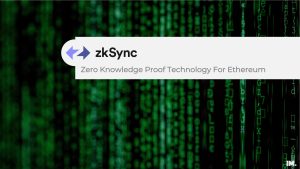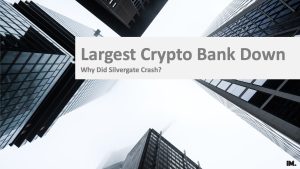Quant Protocol As Blockchain’s Common Language
It took about 15 years for the internet technology to reach a point where it could be grown to what it is today. That point was in 1983 with the introduction of the Transmission Control Protocol (TCP) and the Internet Protocol (IP).
I will spare you the details, as I am definitely not the right person for that, but these protocols were THE common language that allowed computers from all around the world to communicate with one another. Before that, each computer had to implement its own protocol to communicate with another computer. Technically a good solution, but not scalable.
According to an article on the Harvard Business Review, thanks to the internet protocol, an astonishing $5,4 trillion in annual transaction is made possible! Here we are talking about anything from e-commerce, streaming services, online courses, and pretty much anything that can be purchased online nowadays.
And just like that phase from 1969 (introduction of the first computer at UCLA) to 1983 (introduction of the internet protocol), we have now many blockchain networks that are not able to communicate with one another. These main networks are usually called to as Layer 1. I am referring to Bitcoin, Ethereum, BNB Chain, Solana, Cardano, etc.
Nowadays we have thousands of developers building innovative technologies on these networks. But… as long as there is no way for these networks to communicate with one another, it is impossible to reach the same adoption level the internet managed!
Blockchain adoption is being challenged by the exact same issues the internet technology had back in the days. This is honestly, the 1 trillion dollar problem in the blockchain world at the moment.
Interoperability obviously comes in different forms. One aspect of it is cross-chain communication and compatibility. Quant Protocol is solving a different one, namely connecting decentralized projects to the various Layer 1 networks! This means that a (private) decentralized application can operate simultaneously on multiple blockchain networks.
Quant Protocol – Connecting Private Chains to Blockchain Networks
There are currently hundreds of private decentralized applications. And my expectation is that this number will reach the thousands as more and more company start understanding and using the blockchain technology.
Nowadays these networks are completely isolated from one another, making it impossible to exchange crypto assets from one private network to another.
Quant is building a common language for these networks to be able to “talk” to one another by connecting them to the biggest Layer 1 networks.
Quant is not yet another blockchain network. Quant is a communication layer (called “overledger”) built on top of the biggest blockchain networks allowing private networks to communicate with one another via standard functions called APIs (Application Programming Interface).
The technology developed by Quant is now already compatible with Bitcoin, Ripple, Ethereum, and Stellar. Its market capitalization is already at $587 billion and it is backed by tech-giant Oracle.
Quant’s Key To Success
Tech companies like Microsoft, IBM, Alibaba, Amazon and many more have already announced the development of their own proprietary decentralized infrastructure. All of these giants will need a common protocol to interact with one another when needed.
These companies are very much focused internally at the moment, trying to get their own decentralized infrastructure up and running. My expectation is that when their private network is live, they will most likely look for interoperability solutions rather than adapting their infrastructure to accommodate someone else’s.
The interoperability solution is offered at the moment by Quant. And being able to work with the current tech-giants is THE key for its future success and to establish itself as the common protocol for private networks.
How Quant Works
Quant is built around the basic interaction of exchanging crypto assets between two networks. This basic transaction is called atomic swap.
Click here if you’re already bored of the tech stuff and want to get to the juicy part!
An atomic swap transaction is comparable to a transaction at the notary. The notary’s bank account (escrow) holds the money on behalf of two parties while the transaction is being completed. For example, if you are buying a house, the bank will first transfer the money to the notary’s account. The notary checks all is in order. Then transfers the money to the seller.
Quant technology works exactly like a notary in this sense. The crypto assets are held by the Quant overledger. If the right conditions are met for the transaction, the assets are released and sent to the intended receiver.
In other words, atomic swaps are automatic exchange contracts that allow two parties to trade tokens from two different blockchains. This comes with smart contract functionalities that ensure that two sides of the trade fulfilled all predefined conditions before the assets can be transferred.
Atomic swaps is a critical blockchain mechanism because it eliminates the need for intermediaries in such transactions. The intermediaries in this case are the exchanges. With Quant, private companies can exchange their crypto assets cross-chain without relying on the infrastructure of centralized parties. With no intermediaries in the transaction, asset trade is fast, affordable, and extremely secure.
Oracle, one of the investors in Quant, demonstrated an atomic swap between their private blockchain and the Ethereum main net. In this example, loyalty points earned on the Oracle Blockchain were converted into ETH tokens.
What is Quant Protocol Worth?
If we only look at their partnerships with companies such as Oracle, LACCHain, Nexi, it is easy to get excited about this project. For those of you who are curious, you can check the Quant ecosystem here. But to get an idea of Quant’s (fair) valuation, we need to take a look at the specific use case it is solving for.
For this reason, it is important to realize that companies using Quant technology does not mean that they’re also using the QNT token. They can just as well pay Quant in regular fiat money for the atomic swap execution.
The QNT token is used within the Quant decentralized infrastructure that sets up, manages, and executes the atomic swaps. The operators of this decentralized infrastructure receive the QNT token as a reward.
The SWIFT network in the traditional payment world would be a fair comparison to Quant in the decentralized world. For those of you who are not familiar with SWIFT: this is an international network that allows you to send money anywhere in the world. You might recognize the name if you ever had to receive a payment from outside your country and the person ask you for your bank’s SWIFT code!
There is currently 11.000 banks across the world connected to the SWIFT network, processing something close to 15 billion transactions a year.
I will assume that Quant is able to reach this volume in 5 years and that each transaction costs $0,03 (to be conservative, they have a more complicated pricing model based on deposit, withdrawal, and trading fees).
In this scenario, Quant would generate around $ 450 million in revenues. Using a multiplier of 10 on their revenues, its valuation would be $ 4,5 billion. Considering there is about 13 million tokens in their circulating supply, each token is worth in potential something like $ 345.
Current price is $ 175. This means there is a grow potential of 2x in the coming 5 years.
Closing Thoughts On Quant Protocol
It is becoming clear that big tech companies are exploring how to use blockchain technology for their internal infrastructure. Quant has a great chance at becoming that common language between private networks and Layer 1 public networks. The key to this whole story: adoption. The internet protocol was not per se the most elegant and efficient option out there, but it was the one who stuck! So keeping an eye on Quant’s network volume is key in the coming years. And this might not even come as a surprise! You know I have been stressing about blockchain adoption for a while. Here you can read the full article about it, on how adoption is key to the whole blockchain ecosystem.
Newsletter
Stay up-to-date with the latest developments in the stock and crypto market., fund, and crypto market.
(function() { window.mc4wp = window.mc4wp || { listeners: [], forms: { on: function(evt, cb) { window.mc4wp.listeners.push( { event : evt, callback: cb } ); } } } })();
.form { position: relative; left: 50%; transform: translate(-50%); height: 50px; width: 500px; opacity: 0.5; }
.button { position: relative; left: 50%; transform: translate(-50%); background-color: #54595f; border: none; border-radius: 5px; box-shadow: 0px 8px 15px rgba(0, 0, 0, 0.1); width: 116.859; height: 45px; line-height: 15px; color: white; padding: 15px 32px; text-align: center; text-decoration: none; display: inline-block; font-size: 15px; margin: 4px 2px; cursor: pointer; font-family: "Roboto", Sans-serif; }
Disclosure
These are unqualified opinions, and this newsletter, is meant for informational purposes only. It is not meant to serve as investment advice. Please consult with your investment, tax, or legal advisor, and do your own research.




No comment yet, add your voice below!